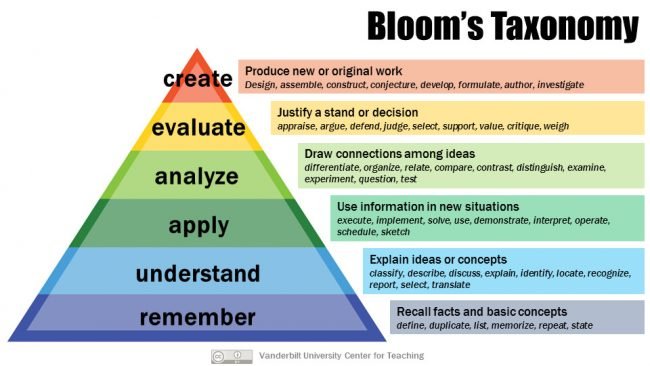Backwards Design
My overall learning model is Backwards Design as developed by Dr. Grant Wiggins and Dr. Jay McTighe and described in their book “Understanding by Design” 1. In the Backwards Design model, the instructional designer starts with the end goal – the desired results (standards) – and then determines the curriculum from the evidence of learning (performances) called for by the standard.
This backward approach to curricular design also departs from thinking about assessment as something to do at the end, once teaching is completed. Instead of creating assessments near the conclusion of a unit of study, backward design calls for the instructional designer to plan the goals or standards in terms of assessment evidence as they begin to plan a unit or course. This model calls for the instructional designer, before developing teaching and learning experiences, to start with the question; “What would we accept as evidence that students have attained the desired understandings and proficiencies?“
I see this model as ideally suited for vocational training as all vocational trades have defined standards, licensing, or certification requirements. The student’s ability to attain these standards, licensing, or certification requirements answer the question “What would we accept as evidence that students have attained the desired understandings and proficiencies?” My five course covers and one sample course cite national certification requirements as the basis of their overall learning objectives.
Within Bloom’s Taxonomy2 the woodworking, welding, and plumbing vocational training programs would take students to the “Apply” level of knowledge. Certification and licensing exams for electricians and electronic technicians would be at the “Understand” level. Higher levels of learning within Bloom’s Taxonomy should occur post-VOTECH as the graduates gain work experience and additional situational or formal training during their careers.

Cognitive Learning
I’ve also integrated program-specific forums into the course to create virtual communities of practice, as means of inspiring students into continuing this practice throughout their careers. The participants in a given forum are all working within the same trade program and will have access to the forums throughout their programs. Each forum does have an assigned moderator of an instructor in the given trade program. An alumni forum is also offered for students to maintain contact with classmates and the school after graduation.
Students have reach-back via email and chat to a specific instructor, via an icon linked to each lesson page. This email communication is intended to form a mentoring relationship using the cognitive apprenticeship model, as the assigned instructor will later be conducting the hands-on portion of the vocational program and working with the student throughout their program. The “Let’s Explore” icons on each lesson leading to extra learning material is intended to offer exploratory learning, encouraging the students to examine and investigate new material that builds on and extends the related lesson.
1. Wiggins, G. W., McTighe, J. (2005). Understanding by Design. Assn. for Supervision & Curriculum Development; 2nd Expanded Edition. ASCD
2. Anderson, Lorin W., Krathwohl, David R., et al. (2000). A Taxonomy for Learning, Teaching, and Assessing: A revision of Bloom’s taxonomy of Educational Objectives. Pearson.